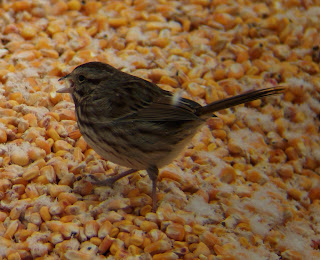
I decided to make a trip to Nine-Mile Run on the Monongahela River in Pittsburgh. I knew that I could find something there even if it is just a few mallards. When I arrived shortly after sunrise, I was surprised to find a Great Blue Heron, two Double Crested Cormorants and some Ring-Billed Gulls in addition to the usual mallards. I quickly set-up the equipment and got to shooting. I didn’t have much time to play around however because, as usual, I had things to take care of at home.

After about 90 minutes of taking pictures and testing my original fieldscope in comparison to the ED50 fieldscope I had to pack up and leave. When I got home, I downloaded the pictures to my computer and went on with my chores. It wasn’t until later in the afternoon that I was able to check out the pictures from the morning. Wow!!! What a difference!!! The colors are much more true to life, the image has more crispness and chromatic aberration has just about been eliminated!!! I was truly surprised, especially since the ED50 scope is physically smaller and doesn’t pass as much light as my 60mm fieldscope. I decided immediately to throw on a coat, set up the camera equipment and sit in the yard for a while to see what else I could get shots of that day.

I guess you could say that I got lucky in my yard this afternoon. I was able to get pictures of Tufted Titmice, Robins, Black-Capped Chickadees, House Sparrows, Dark-Eyed Juncos, Mourning Doves, White-Breasted Nuthatches, Downy Woodpeckers and Red-Bellied Woodpeckers. I’ve already gotten pictures of most of these species with my regular scope so I was able to compare the results of both fieldscopes. Let’s just say that I have got to get me one of these.
















